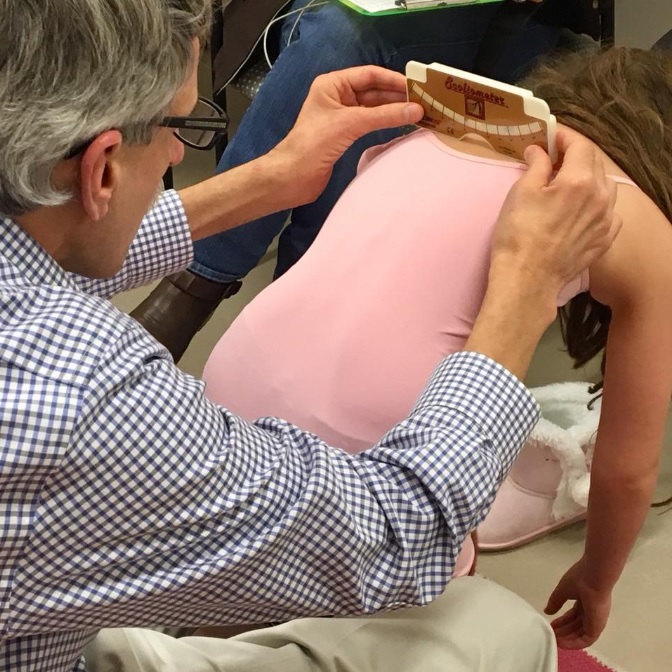Experts in spinal abnormalities at the National Scoliosis Center urge parents to be cognizant of changes in their children’s posture or complaints of lower back pain, as these may be indications of a spinal condition. Many of the signs and symptoms of spinal conditions are easily identifiable and with early intervention can be successfully treated.
Pain is only one indicator of possible spinal issues, and with conditions such as scoliosis and kyphosis pain is not common. Therefore, it is imperative that parents check for observable physical changes in their children’s spinal alignment.
Here are things to check for:
Unevenness: The most prevalent signs of scoliosis are uneven shoulders, hips, or a curve in the back. When leaning over (i.e., reaching down to touch one’s toes) the two sides of the back will be at different heights.
Lower Back Pain: If adolescents, especially athletes, complain of back pain and stiffness, they might be suffering from lumbar spondylolysis. Often this pain is caused by injuries due to overuse and intense physical exercise. Lumbar spondylolysis is characterized by a degeneration of the discs between the vertebrae.
Slouching: If parents notice a slouching or hunchback posture in their child it might be indicative of Schuermann’s Kyphosis. This condition is found in teens during or after a growth spurt and causes a forward rounding curvature in the back due to abnormal growth of vertebrae. Patients with Schuermann’s disease are physically unable to straighten their back.
Falling or Difficulty Walking/Running: Juvenile Spinal Muscular Atrophy Type III, is a rare genetic abnormality characterized by muscle weakness and atrophy. It is typically identified in young children, but can present in adolescents as well. Parents might notice decreased muscle strength, especially in the legs.
Luke Stikeleather, Founder and President of the National Scoliosis Center (Baltimore, MD and Fairfax, VA), encourages parents to talk with their child’s physician if they notice any of these signs or symptoms. “When abnormalities and curves are identified early and we intervene effectively with bracing, we can have a very successful outcome without resorting to invasive surgery,” says Stikeleather.
